
Alancha Restaurant, Instanbul
Polished concrete floors are a popular choice for an industrial-style residential dwellings such as warehouse homes or city lofts. Surprisingly, it was also the perfect design element for the basement renovation of our client’s 1927 historic home. Our design inspiration however came from the use of polished concrete floors in industrial restaurant design. Its creative options, durability, and its water-resistance (when properly sealed) is unmatched. Polished concrete floors require very little maintenance, require no special cleaners, withstand high foot traffic, and are also hypo-allergenic.
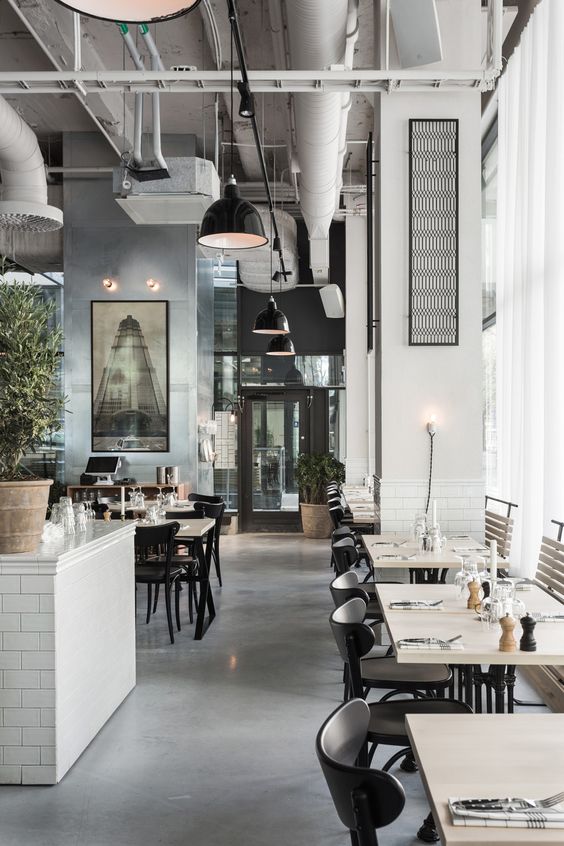
Usine Restaurant, Stockholm
When designing an entertaining space like a basement, feel free to explore design styles even if they are drastically different from the rest of your home. In essence, we were creating an entertaining destination within the home that would have predominately industrial elements, like the polished concrete floors. However, I had plans to import traditional style via furnishings and textiles.
YOU MAY ALSO LIKE: PROJECT PREVIEW—CLIFTON GAME ROOM RENOVATION
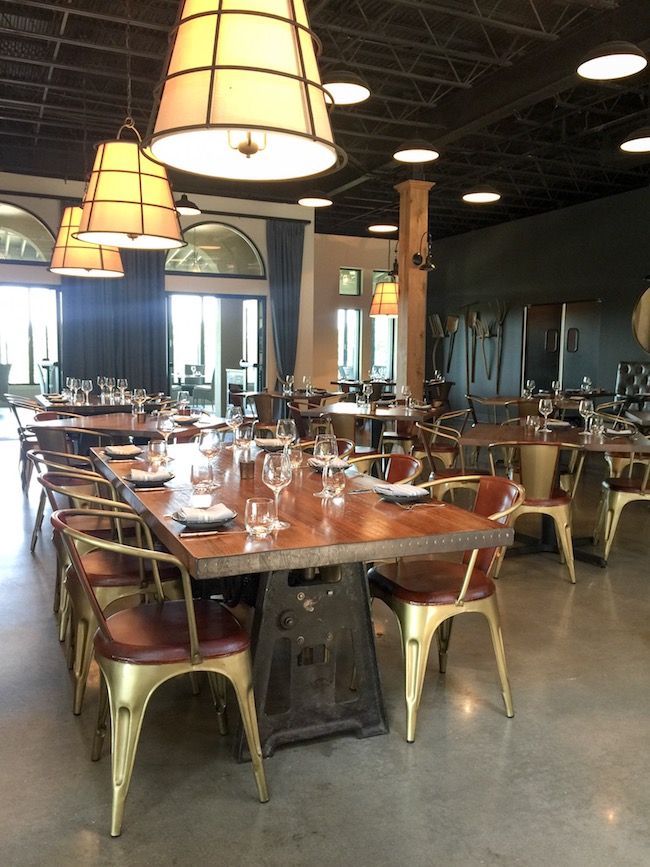
Marc Restaurant, Chateau Elan
CONCRETE DESIGN OPTIONS
When it comes to using polished concrete floors as a decorative option, there are several techniques that make them feel luxurious—acid stain, water-based staining, and concrete-grade paint application. Much like original artwork, no two concrete floors will look alike due to the factors such as age, composition, and surface porosity. You’d be pleasantly surprised to find that you can use concrete stains to mimic the effect of polished marble, leather, and stained wood. Depending on the selected finish, the cost per foot range anywhere from $2 to $20.
Acid Stain
For a more dramatic, distinctive look acid staining is your choice. The end result is best described as mottled, marbled or even vintage. Your color options are limited to earth tones, mostly browns, terra cotta, as well as shades of blue or green.
Water-Based Stain
If you prefer an even, opaque coloring then consider a water-based stain. Though subtle, you have more color options to mix and develop even more custom colors. Add metallic tints to give the subtle color a bit more drama.
Paint
Applying concrete paint isn’t the best option for high traffic areas due to the likely hood of peeling and chipping. Unlike a dye or stain which penetrates into the concrete, a paint simply lies on the surface. It’s generally the concrete that poses the problem. The most common issue is the lack of porosity of the concrete and its inability to accept the primer or the paint.
After evaluating the samples, we had a unanimous decision to go with the black acid stain (which is really a dark brown). The other three samples were nice, however it was much too close to the original color of the concrete. It was drama that we were after, and we were all pleased with the end result.
Stay tuned for the next installment when we discuss the ceiling finishes.
x,
Erika
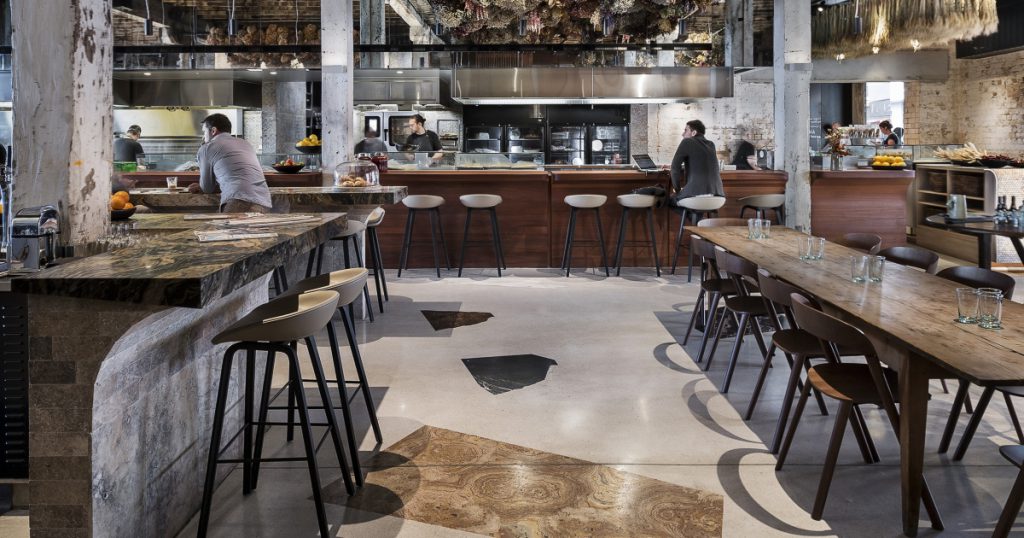
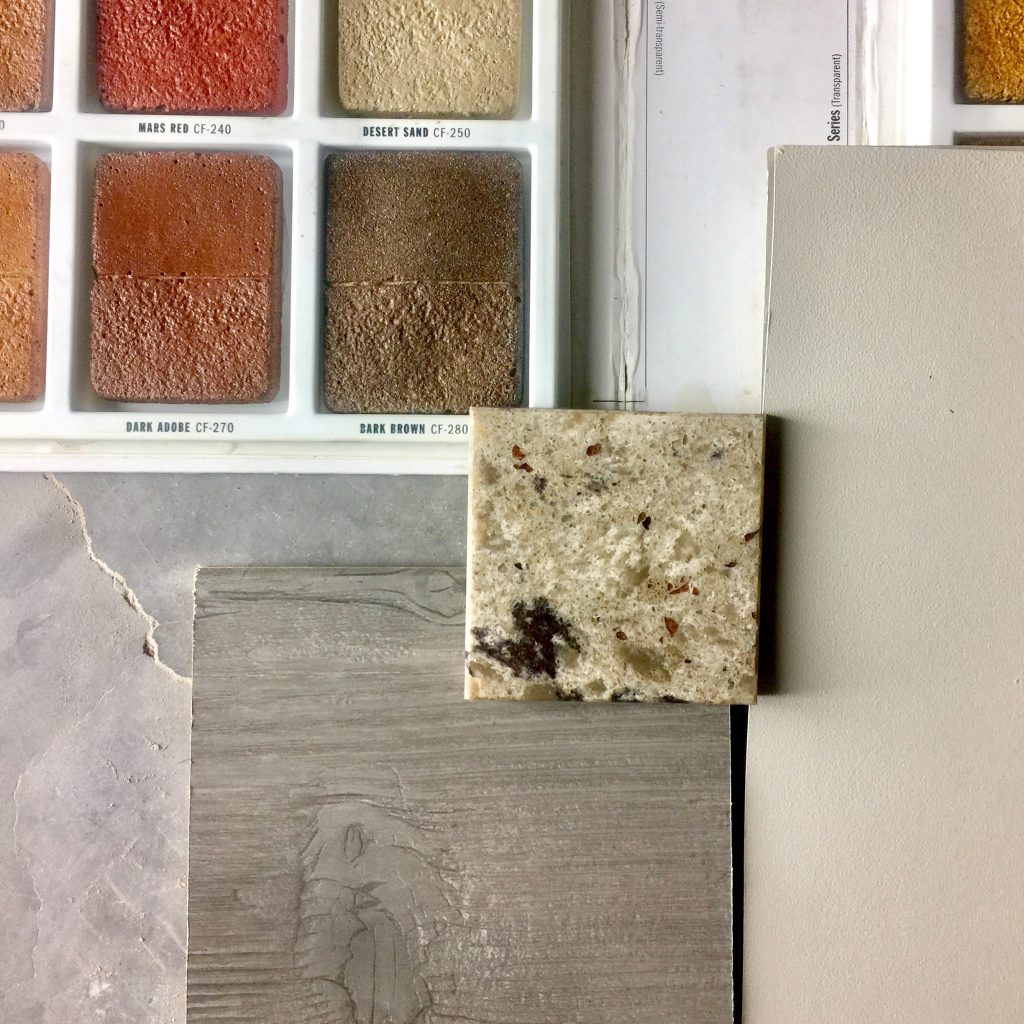
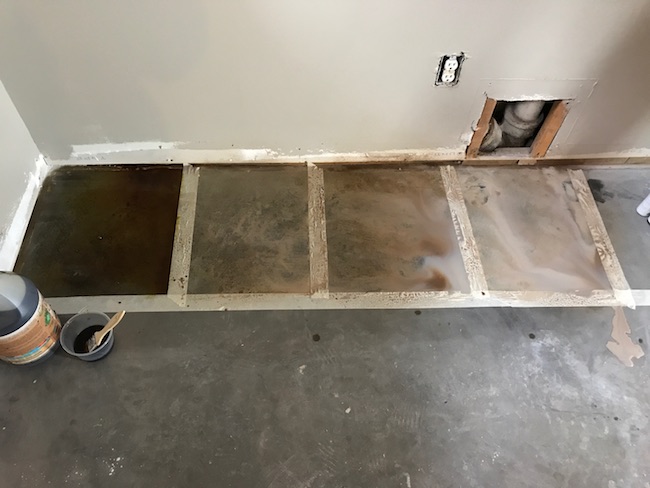
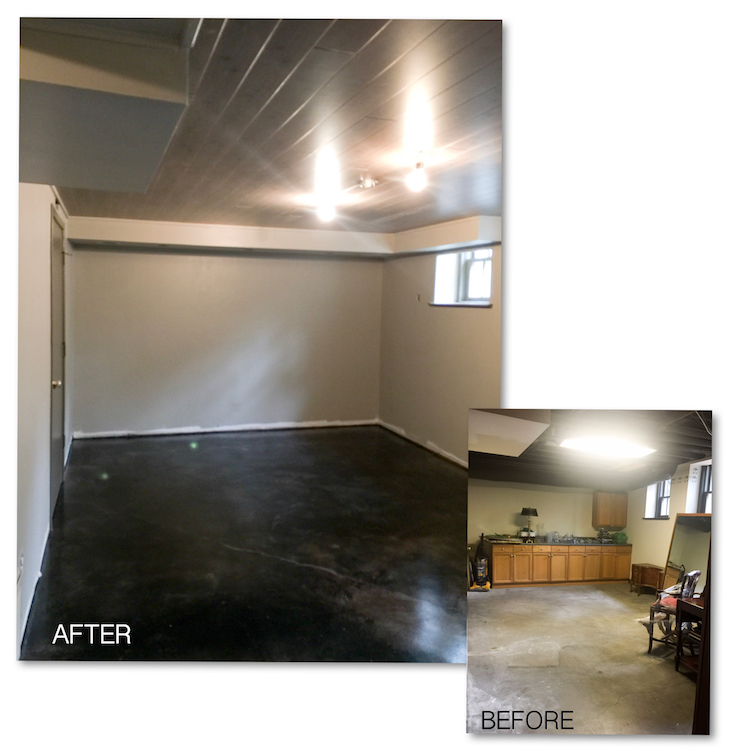
+ show Comments
- Hide Comments
add a comment